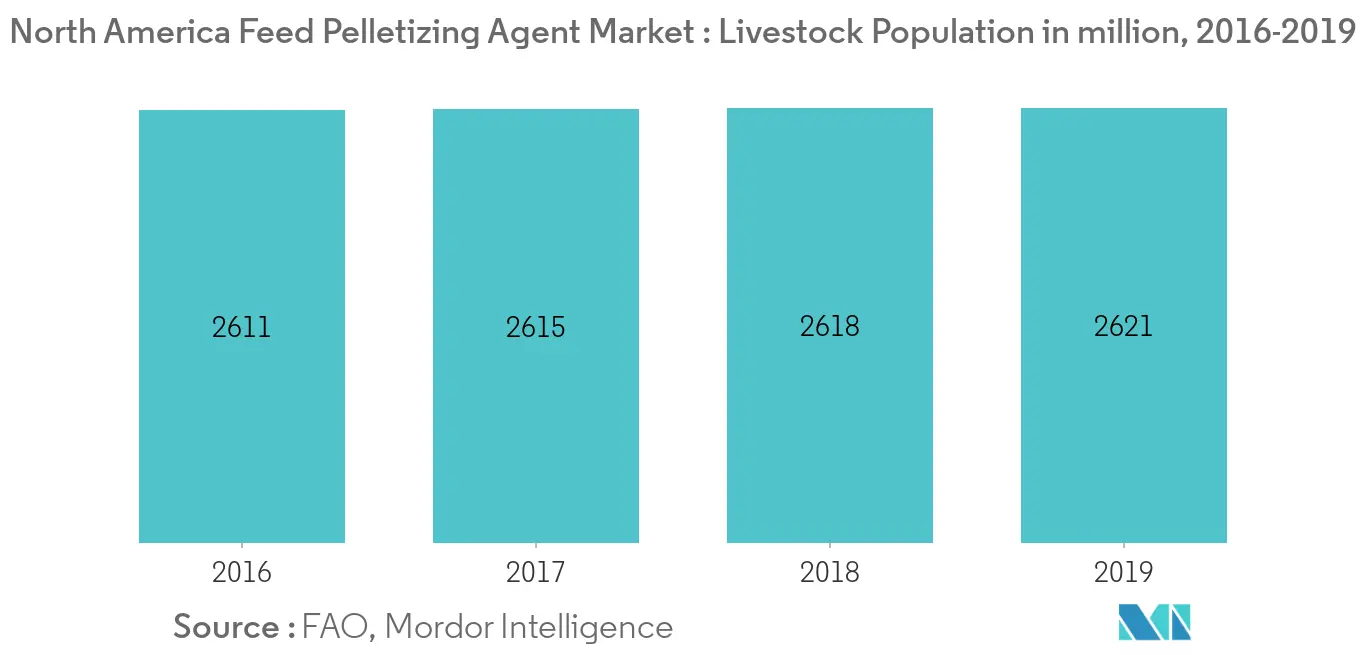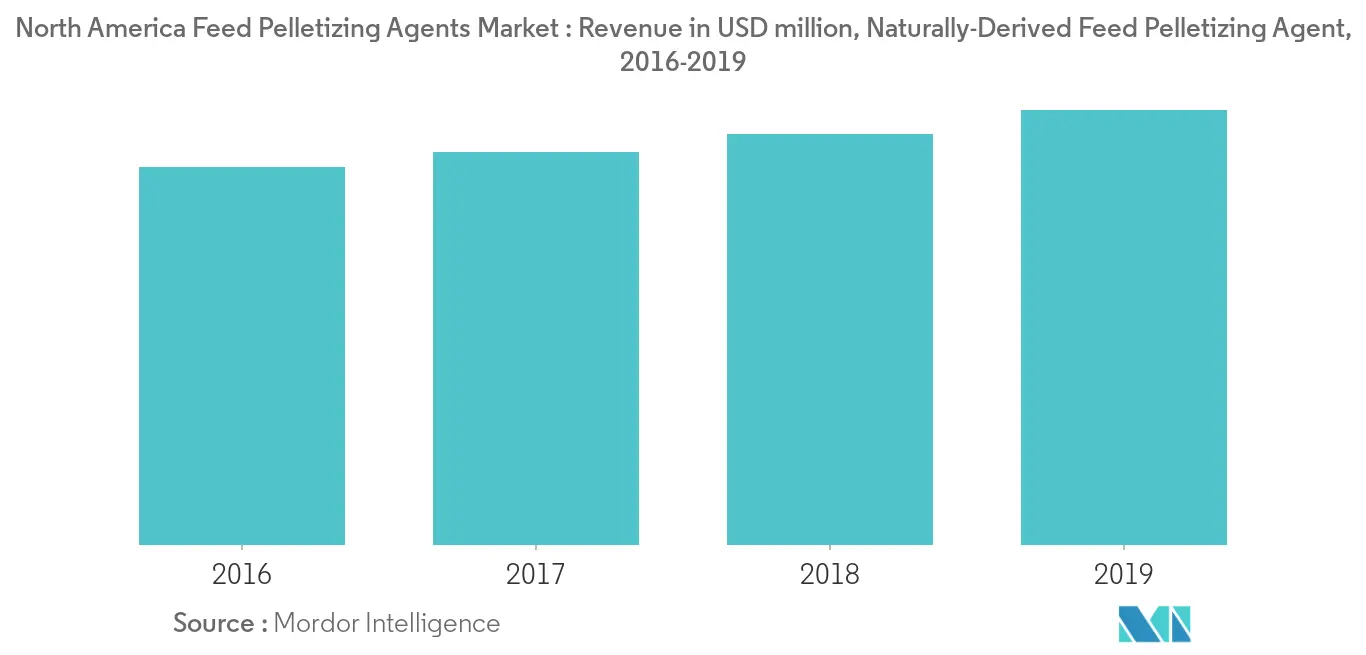Market Trends of North America Feed Pelletizing Agent Industry
This section covers the major market trends shaping the North America Feed Pelletizing Agent Market according to our research experts:
Rising Demand for Animal Protein
The changing dietary patterns and shift towards the rich source of proteins like meat and processed meat made the demand for food derived from animals to increase at a fast pace. The livestock population in North America has increased from 2610.5 million in 2016 to 2617.9 million in 2018. To meet these rising demands, farmers are shifting towards industrialized feed which is helping them to achieve significant results. Pelleted feed helps in improving animal performance in terms of feed intake, weight gain, and feed conversion. Moreover, in most cases, it is also proven that the pelletizing costs are easily overcome by the pelleted feed effect on animals with high improvements in performance. Thus, increasing concern among farmers over animal health and rising demands for animal protein is leading to a rise in feed pelletizing agents' market in North America.

Naturally-Derived Feed Pelletizing Agent Hold the Major Share
Feed pelletizing agents are segmented based on type into Natural and Synthetic feed pelletizing agents. There is an increasing demand for organic foods and natural products in North America in recent years. The organic retail sales in North America has shown an increase of 5.5% by 2018, over 2016. This is majorly due to rising health safety consciousness among the population in the United States and Canada. These factors are driving the naturally derived feed pelletizing agent's segment in North America. Lignin and starch are highly used agents in the North American market. North American companies produce potato starch, cornstarch, and Lignin in considerable amounts. Bentonite, which is a natural feed pelletizing agent is largely produced in the United States and Canada. North America is the largest consumer of bentonite in terms of regional demand, with the U.S. having the largest share contributing nearly one-third of the world's total production.


